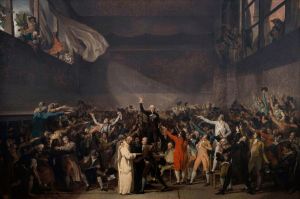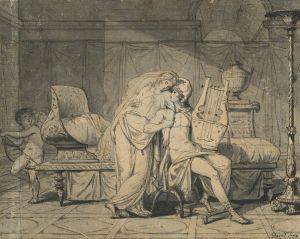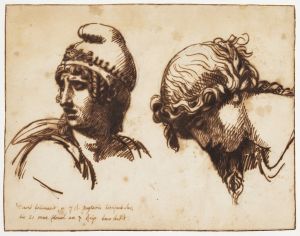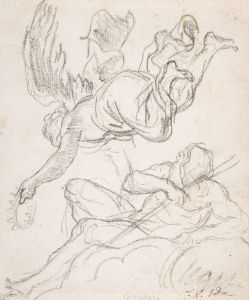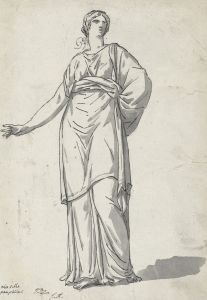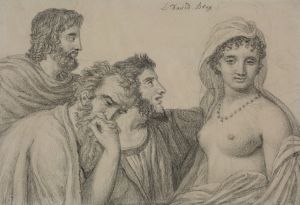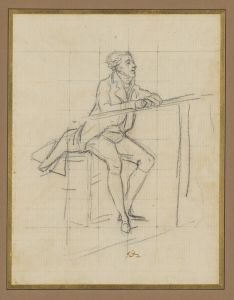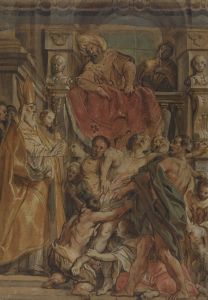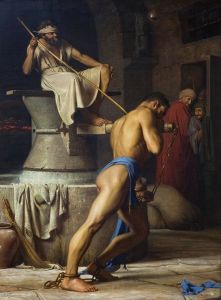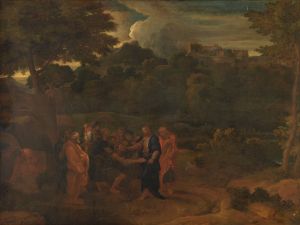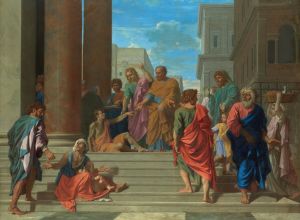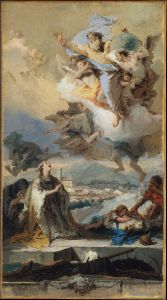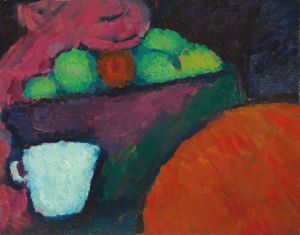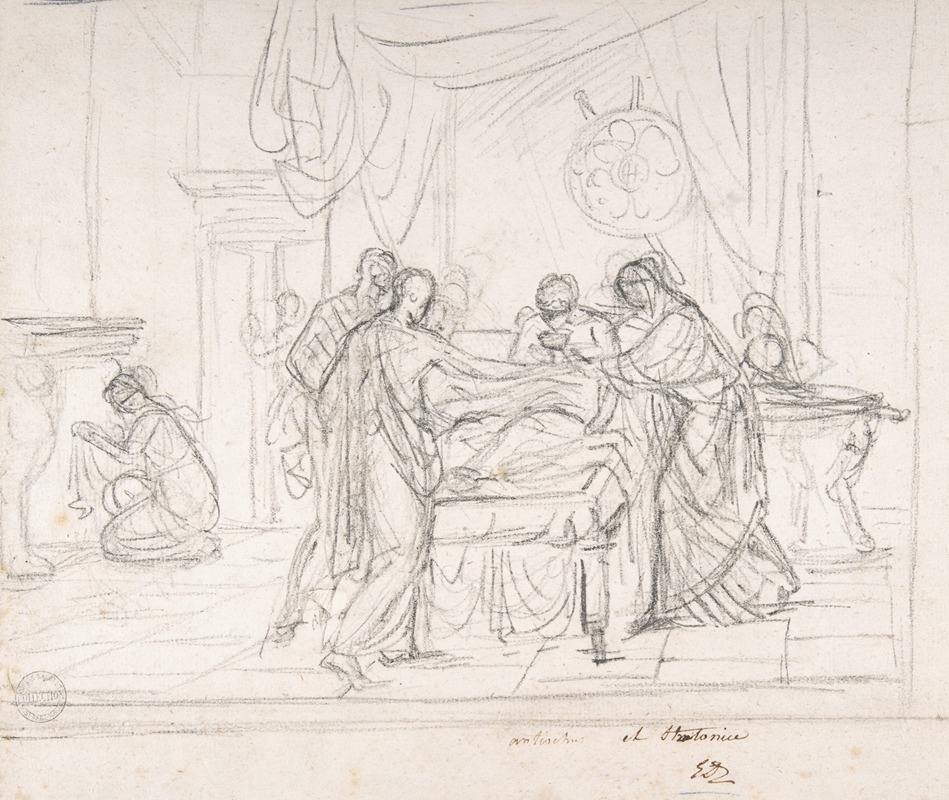
Scene from Ancient History; Cup Offered to an Invalid
A hand-painted replica of Jacques Louis David’s masterpiece Scene from Ancient History; Cup Offered to an Invalid, meticulously crafted by professional artists to capture the true essence of the original. Each piece is created with museum-quality canvas and rare mineral pigments, carefully painted by experienced artists with delicate brushstrokes and rich, layered colors to perfectly recreate the texture of the original artwork. Unlike machine-printed reproductions, this hand-painted version brings the painting to life, infused with the artist’s emotions and skill in every stroke. Whether for personal collection or home decoration, it instantly elevates the artistic atmosphere of any space.
"Scene from Ancient History; Cup Offered to an Invalid" is a painting by the renowned French artist Jacques-Louis David. Created in 1774, this artwork is an early example of David's neoclassical style, which he would later become famous for. The painting was produced during a pivotal period in David's career, as he was honing his skills and developing the artistic approach that would define his later works.
Jacques-Louis David was born in 1748 in Paris, France, and became one of the most influential painters of his time. He was a leading figure in the neoclassical movement, which sought to revive the classical art and culture of ancient Greece and Rome. This movement was characterized by a focus on simplicity, harmony, and proportion, as well as a return to classical themes and subjects.
"Scene from Ancient History; Cup Offered to an Invalid" reflects these neoclassical ideals. The painting depicts a scene from ancient history, although the specific historical event or figures represented are not clearly identified. The composition centers around an act of compassion, as one figure offers a cup to another who appears to be an invalid. This gesture of kindness and humanity is a common theme in neoclassical art, which often sought to convey moral lessons and virtues.
The painting is notable for its use of classical elements, such as the drapery of the figures' clothing and the architectural details in the background. David's attention to detail and his skillful use of light and shadow are evident in the rendering of the figures and their surroundings. The composition is balanced and harmonious, with a clear focus on the interaction between the two central figures.
David's early works, including "Scene from Ancient History; Cup Offered to an Invalid," were instrumental in establishing his reputation as a master of neoclassical painting. His ability to convey complex emotions and narratives through his art would later be seen in his more famous works, such as "The Oath of the Horatii" and "The Death of Socrates."
This painting was created during David's time at the French Academy in Rome, where he studied classical art and architecture. His experiences in Rome greatly influenced his artistic development and helped to shape his neoclassical style. The painting reflects the influence of ancient Roman and Greek art, which David studied extensively during his time in Italy.
While "Scene from Ancient History; Cup Offered to an Invalid" may not be as well-known as some of David's later works, it remains an important piece in understanding the evolution of his artistic style. It demonstrates his early commitment to the principles of neoclassicism and his interest in exploring themes of virtue and morality through historical subjects.
In summary, Jacques-Louis David's "Scene from Ancient History; Cup Offered to an Invalid" is a significant early work that showcases the artist's developing neoclassical style. Through its depiction of a compassionate act set in an ancient context, the painting reflects the ideals of the neoclassical movement and provides insight into David's artistic journey.





